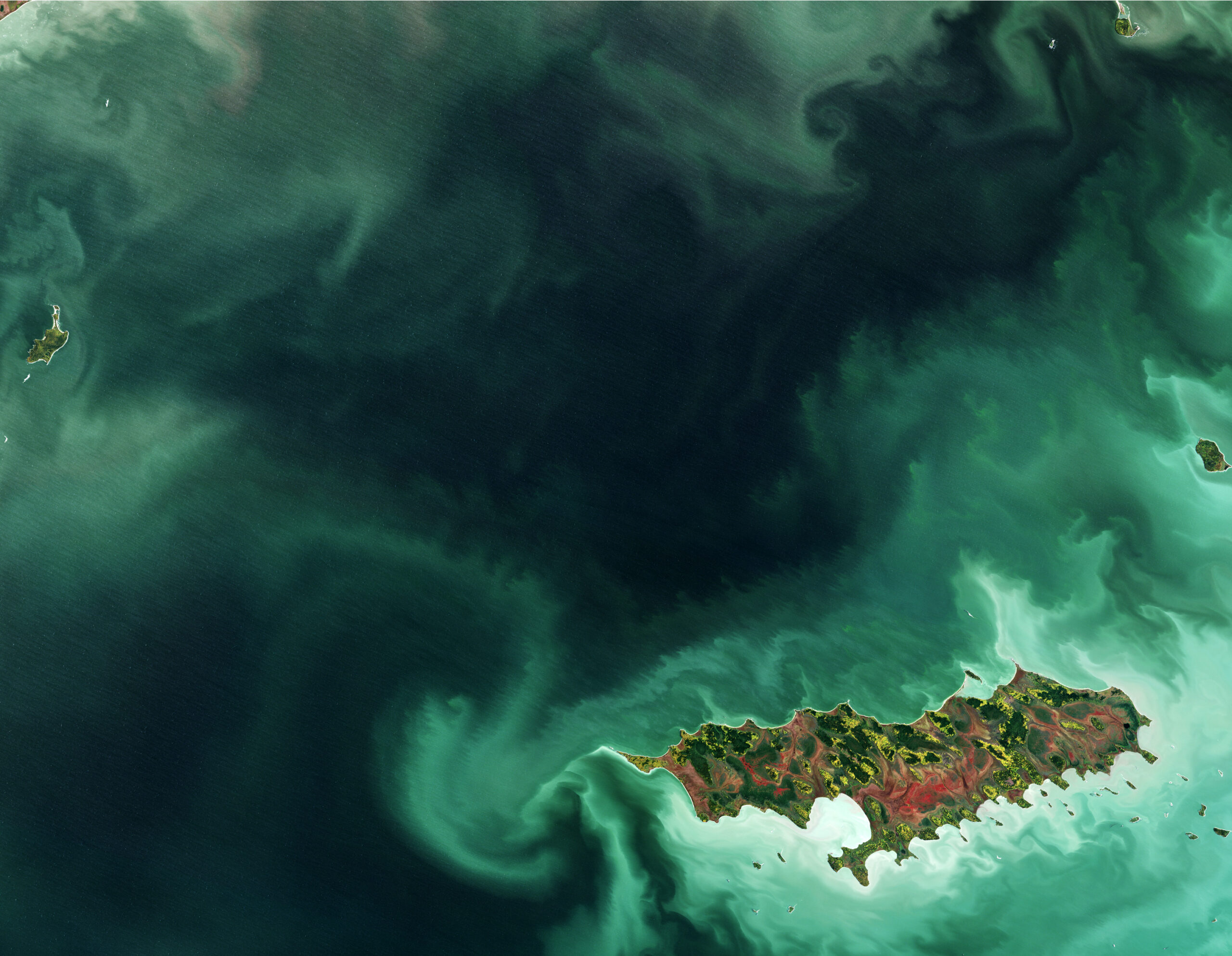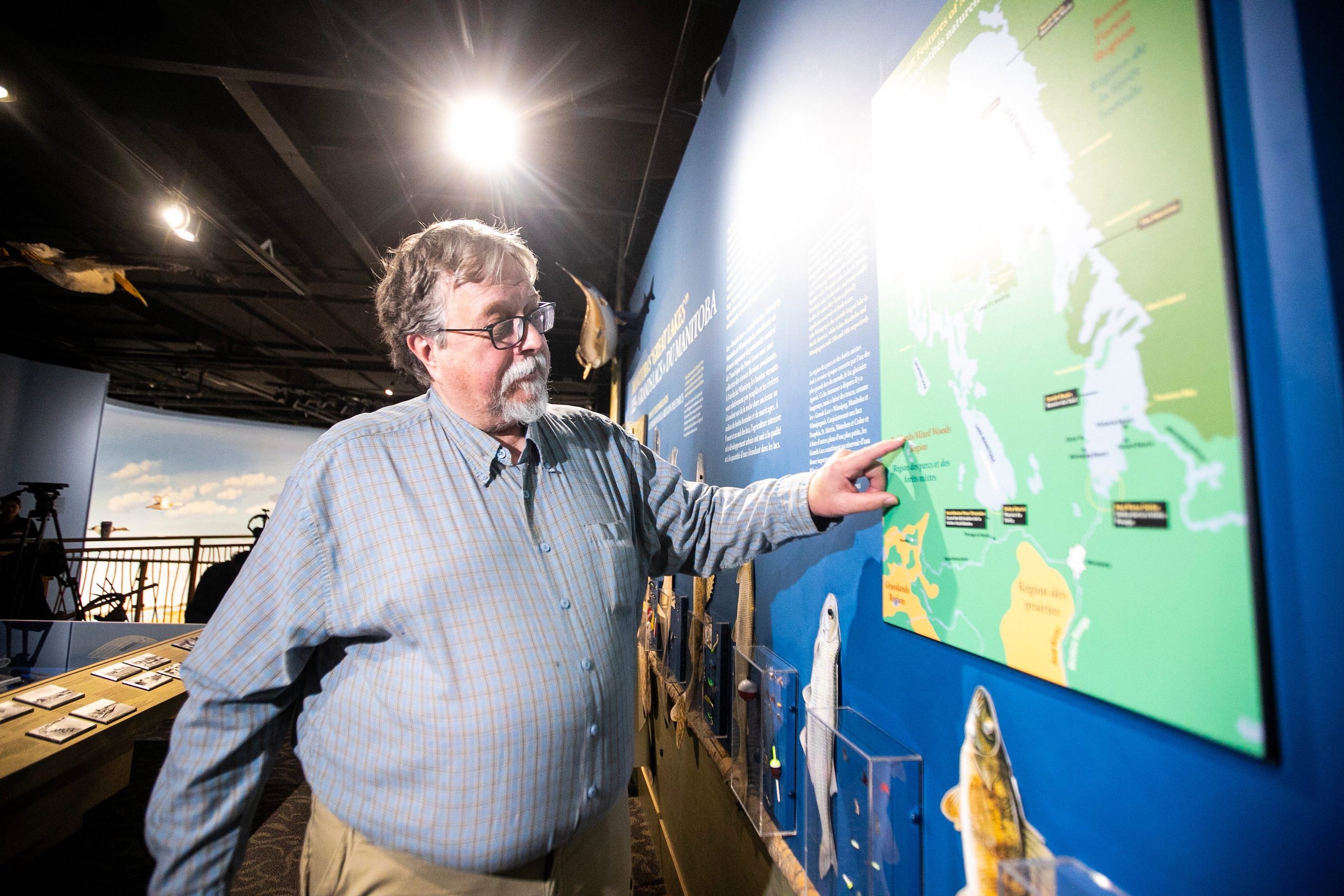
‘Afraid of the water’? Life in a city that dumps billions of litres of raw sewage into lakes and rivers
10 billion litres of sewage are dumped into Winnipeg’s lakes and rivers each year. Some...
Get the inside scoop on The Narwhal’s environment and climate reporting by signing up for our free newsletter.
The federal government is pitching in nearly $1 million to kickstart work on an ecological corridor stretching from Manitoba’s Riding Mountain National Park to the Assiniboine River.
Surrounded by fishing paraphernalia and other depictions of the province’s freshwater resources in the Manitoba Museum on Friday morning, Winnipeg South Member of Parliament Terry Duguid announced the funds will help lay the groundwork for “a belt of greenspace” along the Little Saskatchewan River, eventually linking the iconic national park to protected areas and private lands in the province’s west.
“Like many Manitobans, I grew up with fond memories of the river, the park and everywhere in between,” Duguid said at the announcement.
“These landscapes hold a special place in our hearts, not just because of their beauty but for their role in sustaining our communities and our ecosystems.”

The funding comes from Parks Canada’s national program for ecological corridors, which launched in 2022 with the goal of improving connectivity between protected areas and natural habitats, conserving biodiversity and protecting ecosystem services. Last week, Parks Canada announced almost $6 million to support non-profits developing ecological corridors in nine priority areas across the country.
“Imagine this: a safe passage for endangered species like the short-eared owl and red-headed woodpecker, a private habitat for moose, deer and black bears, a commitment to conservation that honours the land’s history and secures its future,” Duguid said, adding the new corridor represents a step toward achieving Canada’s goal to protect 30 per cent of lands and waters by 2030.
The Assiniboine West Watershed District — the region’s land and water management organization — will lead the initiative in collaboration with local municipalities, First Nations and post-secondary institutions.
“I’m very excited to explore the opportunities and the benefits that the program could bring to the landscape as well as the people who live in the watershed,” Ryan Canart, a fourth- generation farmer and general manager of the watershed district, said at the announcement.
Canart said the ecological corridor project aligns with his organization’s mandate to work with farmers and landowners to steward soil and water resources across the watershed. The Little Saskatchewan River is part of the Lake Winnipeg basin, which stretches across four provinces and four U.S. states.

Over the next year, the district and its partners will spend the federal funds on research and data collection projects to build the foundation for an official ecological corridor designation in the future.
Don Huisman, who represents the upper Little Saskatchewan River on the watershed district board, said those projects include a hydrologic map to model the impacts of rain, flooding and other severe weather events across the watershed. Research will also take place to better understand how aquatic life navigates dams along the river, water quality testing, population counts for local birds and wildlife and incentives for farmers to incorporate regenerative agriculture practices. These and other resources will be stored in a digitized archive, compiling decades of watershed data and research.
“I’ve lived for 33 years on the Little Saskatchewan River and we already consider it an ecological corridor, but this gift we’re getting for this year is going to make it better,” he said.

Huisman stressed the watershed district will be working closely with local Aninshnaabeg — including Rolling River First Nation, just south of Riding Mountain park — to incorporate Traditional Knowledge into the planning and research.
“We all share the resources on the land,” Rolling River Elder Elvin Huntinghawk said. “Historically, the river systems were highways … some of that vegetation would have natural healing properties.”
“As a nation, as people, we’re going to have to go back to those early traditional teachings.”
Duguid said the learnings from this natural corridor will reverberate across an extensive network of waterways and beyond.
“This is a laboratory that we can learn from,” he said. “We know in this age of climate change, floods, droughts, excessive nutrient loading, those are all challenges for Lake Winnipeg, the Great Lakes and other water bodies across the country, so this is a great initiative that we can learn from.”
Julia-Simone Rutgers is a reporter covering environmental issues in Manitoba. Her position is part of a partnership between The Narwhal and the Winnipeg Free Press.
Get the inside scoop on The Narwhal’s environment and climate reporting by signing up for our free newsletter. On a warm September evening nearly 15...
Continue reading
10 billion litres of sewage are dumped into Winnipeg’s lakes and rivers each year. Some...

Court sides with Xatśūll First Nation, temporarily halting Mount Polley mine waste expansion

Break out the champagne: Emma’s storied life and leadership in journalism has earned her the...
